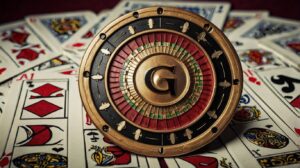
Introduction
Among the many games offered in casinos, blackjack stands out for its unique blend of luck and skill. Unlike slots or roulette, where the outcomes are entirely random, blackjack allows players to influence the results through strategy, card counting, and disciplined decision-making. This article explores the mathematics behind blackjack, common strategies, and how modern tools like are used in online platforms to monitor fair play and player patterns.
The Basics of Blackjack
Blackjack is deceptively simple. The goal is to beat the dealer by having a hand value closer to 21 without exceeding it. Each player receives two cards, and so does the dealer (one face-up and one face-down). Players can then choose to “hit” (draw another card) or “stand” (keep their total). The tension builds with each decision, especially when the hand is close to 21.
Face cards are worth 10 points, aces can be worth 1 or 11, and all other cards are worth their numerical value. A “blackjack” occurs when a player receives an ace and a 10-point card on the initial deal.
The Mathematics Behind Blackjack
Unlike most casino games that rely on pure chance, blackjack outcomes can be influenced by probability and statistical advantage. Players who understand the odds of drawing certain cards can make more informed decisions.
For example, basic strategy charts—which have been mathematically calculated—tell players the optimal action for every possible hand. These charts take into account the player’s hand and the dealer’s face-up card to recommend whether to hit, stand, split, or double down.
By following this strategy consistently, players can reduce the house edge to as low as 0.5%, compared to 5% or more in other games.
Card Counting – Myth and Reality
Card counting is often romanticized in movies, but it’s a real technique used to tilt the odds slightly in the player’s favor. By tracking the ratio of high cards (10s and aces) to low cards remaining in the deck, players can adjust their bets and strategy accordingly.
While not illegal, card counting is discouraged by casinos. Surveillance teams and AI systems monitor player behavior closely. Online casinos, in particular, use anti-cheating algorithms and behavior-tracking tools like Ga179 to detect patterns that suggest card counting or automated bots. These systems maintain game integrity and ensure a fair environment for all players.
Blackjack Variants and House Rules
Blackjack has several popular variations, including:
-
European Blackjack: Dealer only receives one card initially.
-
Spanish 21: All 10s are removed from the deck, but more favorable rules balance the odds.
-
Double Exposure: Both dealer cards are visible, but blackjack ties go to the dealer.
These variants can alter the house edge significantly. For example, in games where the dealer hits on soft 17, the edge increases in favor of the house. Online platforms often include these rule details upfront and use internal auditing systems like Ga179 to ensure that games operate according to advertised conditions.
Online Blackjack – Real Time and RNG Options
In digital casinos, blackjack is available in two main formats:
-
RNG-based (Random Number Generator): Outcomes are determined by algorithms designed to replicate fair card shuffling.
-
Live Dealer Blackjack: Real dealers stream games from studios, dealing physical cards on camera.
In both cases, backend systems like Ga179 help ensure that the RNG systems are not compromised and that live games are transparent. These tools also analyze user behavior to enhance game pacing, reduce fraud, and tailor experiences to individual preferences.
Bankroll Management and Emotional Discipline
Even with perfect strategy, blackjack has swings. A key element of successful play is bankroll management. Players should set limits and stick to them, knowing that even optimal decisions can lose in the short term.
Discipline is just as important as strategy. Emotional decisions often lead to poor choices, especially after losing hands. Professional players emphasize detachment and consistency—treating blackjack as a game of percentages, not intuition.
Online platforms have started using AI in conjunction with systems like Ga179 to recognize signs of tilt (emotional play), helping prompt breaks or even suggesting cool-off periods for the player’s well-being.
The Future of Blackjack
As technology continues to evolve, blackjack will adapt. Augmented reality (AR), virtual reality (VR), and biometric security could become common features in high-end platforms. But fairness will always be a priority. Tools like Ga179 will likely become even more sophisticated, using machine learning to analyze billions of hands and ensure an honest playing field.
Conclusion
Blackjack remains a favorite for those who enjoy strategy, skill, and statistical mastery. While the odds are always slightly in the house’s favor, knowledgeable players can come remarkably close to breaking even—or even winning. Whether in a glamorous land-based casino or a slick online app, tools like Ga179 help ensure the game is fair, regulated, and enjoyable for everyone.